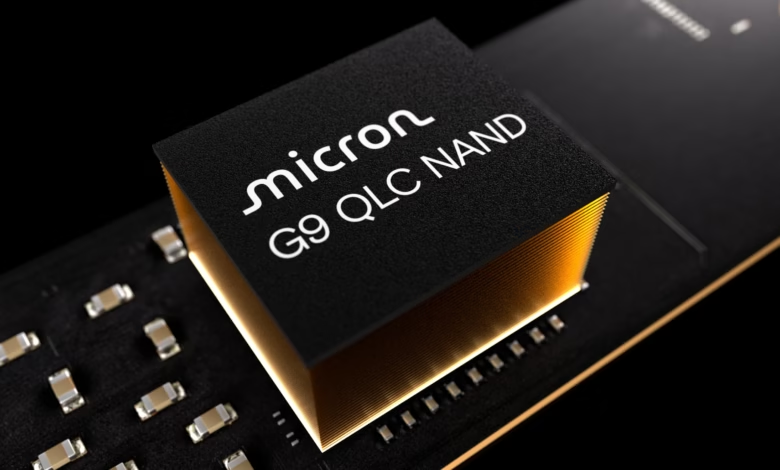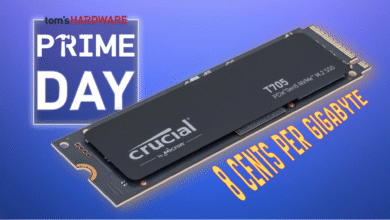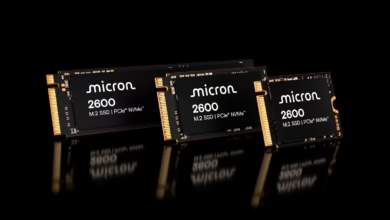Micron’s 2600 SSD: 63% Faster Writes Than Competitors

▼ Summary
– Budget and high-capacity SSDs often use QLC NAND flash, which is cost-effective but lacks performance, prompting Micron to introduce adaptive write technology.
– Micron’s 2600 NVMe SSDs feature Adaptive Write Technology, allowing memory cells to switch between SLC, TLC, and QLC modes for optimized performance and storage.
– Flash memory stores data by trapping electrical charge in transistors, with SLC being the fastest but least dense, while QLC stores more data but is slower.
– The Micron 2600 SSD starts writing in fast SLC mode, switches to TLC when SLC cells fill, and finally uses QLC, with data later consolidated to free up faster cells.
– Micron claims the 2600 offers up to 63% faster sequential writes and 49% better random writes than competing QLC drives, potentially making it a strong budget option.
Micron’s latest 2600 SSD promises to shake up the budget storage market with its innovative adaptive write technology, delivering significantly faster performance than typical QLC-based drives. By dynamically switching between SLC, TLC, and QLC modes, this new NVMe solution aims to eliminate the traditional trade-offs between speed, capacity, and affordability that plague many entry-level solid-state drives.
Most cost-effective SSDs rely on QLC NAND flash, which prioritizes storage density over performance. While this approach keeps prices low, it often results in sluggish write speeds during heavy workloads. Micron’s breakthrough comes from its G9 QLC NAND flash, which intelligently adjusts its operation mode based on demand, starting with blazing-fast SLC writes before gradually shifting to TLC and finally QLC as capacity fills up. This adaptive approach ensures optimal performance without sacrificing the cost advantages of QLC technology.
The technical magic happens at the transistor level. Unlike conventional SSDs that lock memory cells into a single mode, Micron’s design allows cells to store data using different voltage levels. SLC mode (1-bit per cell) offers the fastest performance, while TLC (3-bit) and QLC (4-bit) maximize capacity. What sets the 2600 apart is its ability to redistribute data during idle periods, moving information from faster SLC/TLC cells to QLC storage to free up high-performance zones for new writes.
Performance claims are impressive, Micron reports the 2600 achieves 63% faster sequential writes and 49% better random write speeds compared to standard QLC competitors. The 1TB model boasts 7,200 MB/s reads and 5,800 MB/s writes, with random performance hitting 1,000 kIOPS. While these numbers trail some premium TLC alternatives like the Lexar NM790, the 2600’s potential lies in its price-to-performance ratio, especially for larger capacities.
Available in 512GB, 1TB, and 2TB variants using the standard M.2 form factor, the Micron 2600 could become a compelling option for budget-conscious gamers and PC builders. The real test will come when independent benchmarks verify whether its adaptive technology delivers consistent real-world advantages over conventional QLC drives. If pricing stays competitive, this might just redefine expectations for affordable NVMe storage.
(Source: PCGAMER)



